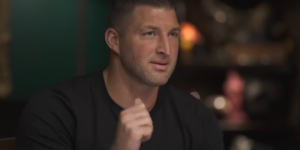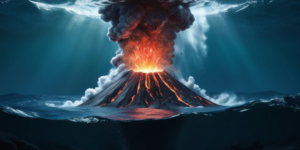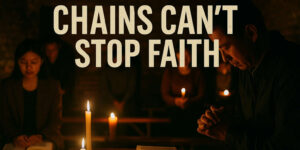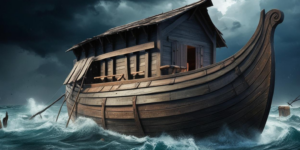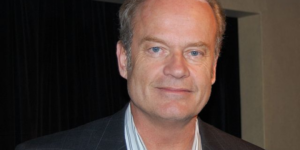Remembering the Holocaust: Four Jews Escaped From Auschwitz to Tell the Truth About Hitler
To misunderstand the nature and threat of evil is to risk being blindsided by it.
In 1933, the world was blindsided by the rise of Adolf Hitler.
In 1939, it was stunned by the German invasion of Poland and the Nazi leader’s bloodthirsty quest for global domination.
Perhaps most tragically, a majority of the world did not understand Hitler’s plan to annihilate the Jews until it was almost too late.
Today, we face dangerous new threats from Iran, North Korea and a rising czar in Russia, not from Germany.
Yet with anti-Semitism spiking in the United States, Europe and around the world, we must be careful to learn—or re-learn—the lessons of history regarding how the world failed to understand the threat posed by Hitler and the Nazis and deal with it decisively, before events spin out of control.
To begin, we must examine the extraordinary events that occurred in the spring of 1944.
Four Jewish men pulled off one of the greatest escapes in all of human history, from a Nazi death camp in southern Poland.
They did not simply escape to save their own lives.
Nor did they escape merely to tell the world about a terrible crime against humanity that had been—and was being—committed.
What set these true heroes apart is that they planned and executed their escapes in the hope of stopping a horrific crime before it was committed—the extermination of the Jews in Hungary.
Several years ago, to draw attention to the significance these unknown—or unremembered—events, and the lessons they have to teach us, I wrote a work of historical fiction, “The Auschwitz Escape.”
While I changed the names of the key figures involved in the true life drama, so as not to put words in their mouths that cannot be verified as their own, it was and remains my deepest hope that the book will cause many to dig into the real history of these remarkable heroes.
Rudolf Vrba and Alfred Wetzler were Slovak Jews. They escaped from Auschwitz on April 7, 1944. Arnost Rosin was also a Slovak Jew and Czeslaw Mordowicz was a Polish Jew.
Together they escaped from Auschwitz on May 27, 1944.
Upon making it safely to Czechoslovakia, Vrba, only 19 years old, and Wetzler, 25, linked up with the Jewish underground.
They explained Auschwitz was not simply a labor camp, as most thought, but rather a death camp. The Nazis were systematically murdering prisoners, mostly Jews, using poison gas called “Zyklon B,” then burning their bodies in enormous ovens.
The men explained the Nazis were dramatically enlarging an expansion camp a few miles from Auschwitz called “Birkenau,” building new train tracks, enormous new gas chambers and massive new crematoria.
They had also completed ramps leading all those arriving in the cattle cars directly into the gas chambers.
Vrba and Wetzler said they had heard SS guards talking about Hungarian “salami” that would soon be arriving.
They knew from their jobs as clerks in the camp that none of Hungary’s nearly 450,000 Jews had yet arrived, even though Jews from most of Europe had already come.
They urged the Czech Jewish leaders to warn Hungarian Jews immediately so they would revolt and not get on the trains. They also urged that the Allied leaders be notified so they would mount an operation to liberate Auschwitz.
Both men were asked to separately draft detailed eyewitness reports. Their reports were then cross-checked, compiled into a single report, and then simultaneously translated into multiple languages.
Eventually, Mordowicz, 23, and Rosin, 30, escaped as well.
When they got to Czechoslovakia, they wrote up reports of their own, which were added to the existing document. But all this took precious time the Hungarian Jews did not have.
The report, known as “The Auschwitz Protocol,” was sent to Jewish and Allied leaders in early June 1944. Excerpts were leaked to the press, creating an international uproar. But the Germans had begun deporting Hungarian Jews to Auschwitz in massive numbers on May 15. And “The Auschwitz Protocol” landed in the hands of U.S. President Franklin Roosevelt and British Prime Minister Winston Churchill and their top aides just as the Allies were executing the D-Day invasion of Normandy and trying to liberate France.
On July 2, 1944, the U.S. began bombing Budapest. Vice-Admiral Miklos Horthy, the Nazi-backed regent of Hungary, feared the air raid was in reprisal for the Jewish deportations.
He ordered the trains halted.
Thus, while, more than 300,000 Hungarian Jews had already been sent to Auschwitz and gassed, 120,000 more Hungarian Jews were saved from deportation and certain death.
Sir Martin Gilbert, the British historian, would later note, “The Auschwitz Protocol” was responsible for “the largest single greatest rescue of Jews in the Second World War.”
That said, neither the U.S. nor the British military took direct action to liberate Auschwitz during the war. Nor did they bomb the train lines to the death camps, or bomb the camps themselves, as Jewish leaders had implored.
When the Soviets finally entered Auschwitz on Jan. 27, 1945, only 7,000 prisoners remained alive. More than 1.1 million had already been exterminated.
Why didn’t Washington and London take decisive action upon receiving detailed, inside intelligence?
Couldn’t they have at least tried to stop the Holocaust, or at least disrupt it, knowing the hellish nightmare people in the camps were experiencing?
Historians have been debating this for years. Yet the issues are not academic.
Today, our leaders also face urgent questions.
Let’s consider just one—Iran has threatened to “wipe Israel off the map.” It has threatened to create a world without the “Great Satan” (a.k.a., the U.S.), as well. The mullahs are actively developing the ability to build nuclear warheads and the missiles to deliver them.
Do we currently have inside sources giving us accurate intelligence on the state of Iran’s nuclear program?
If diplomacy and sanctions fail, should the West take military action against Iran’s nuclear facilities before the mullahs can set into motion a second Holocaust?
Rather than Israel launching an attack, should the U.S. support an Israeli pre-emptive strike?
What are the risks of launching such a strike?
What are the risks of delay?
Would history forgive us if we wait too long and Iran strikes first?
The moral courage that Rudolf Vrba, Alfred Wetzler, Arnost Rosin and Czeslaw Mordowicz demonstrated nearly 80 years ago was extraordinary.
They understood the nature and threat of evil, and they risked their lives to tell the world the truth.
They deserve to be remembered and heralded by Jews and Christians and all who care about freedom and human dignity.
We must never forget what they did, and why they did it. 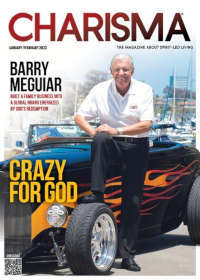 But we must also be ready to act wisely, bravely and decisively if a mortal threat rises again.
But we must also be ready to act wisely, bravely and decisively if a mortal threat rises again.
For if we learn nothing else from the history of the Holocaust, we had better learn this.
Evil, unchecked, is the prelude to genocide.
For the original article, visit our content partners at allisrael.com.{eoa}
Bring Charisma magazine home with a subscription today!
Joel C. Rosenberg is the editor-in-chief of ALL ISRAEL NEWS and ALL ARAB NEWS and the President and CEO of Near East Media. A New York Times best-selling author, Middle East analyst, and Evangelical leader, he lives in Jerusalem with his wife and sons.

















